Table of Contents
The UNESCO Sites in Brazil have resulted from recognizing 23 cultural and natural landmarks as UNESCO World Heritage Sites in Brazil and 21 locations on the Brazil UNESCO tentative list. These touristic sites in Brazil are acknowledged for their unique and valuable cultural, natural, artistic, and historical significance and are preserved for future generations to enjoy.
In addition to these 23 sites in the Brazil UNESCO list, there are many other places to travel to Brazil that are being considered for UNESCO recognition. These sites, listed on the tentative list, showcase the country’s rich cultural heritage and are waiting for approval to join the prestigious and famous World Heritage Sites list.
To help visitors discover these remarkable Brazilian tourist attractions, we have put together an interactive map of the UNESCO sites in Brazil.
Brazil UNESCO Map
Click markers to show information and photo.
World Heritage Sites in Brazil
UNESCO World Heritage Sites in Brazil
There are 23 UNESCO World Heritage Sites in Brazil. All of these three sites are listed under the Cultural category.
- Brasilia
- Historic Centre of Salvador de Bahia
- Historic Centre of São Luís
- Historic Centre of the Town of Diamantina
- Historic Centre of the Town of Goiás
- Historic Centre of the Town of Olinda
- Historic Town of Ouro Preto
- Jesuit Missions of the Guaranis: San Ignacio Mini, Santa Ana, Nuestra Señora de Loreto and Santa Maria Mayor (Argentina), Ruins of Sao Miguel das Missoes (Brazil)
- Pampulha Modern Ensemble
- Rio de Janeiro: Carioca Landscapes between the Mountain and the Sea
- Sanctuary of Bom Jesus do Congonhas
- São Francisco Square in the Town of São Cristóvão
- Serra da Capivara National Park
- Sítio Roberto Burle Marx
- Valongo Wharf Archaeological Site
- Atlantic Forest South-East Reserves
- Brazilian Atlantic Islands: Fernando de Noronha and Atol das Rocas Reserves
- Central Amazon Conservation Complex
- Cerrado Protected Areas: Chapada dos Veadeiros and Emas National Parks
- Discovery Coast Atlantic Forest Reserves
- Iguaçu National Park
- Pantanal Conservation Area
- Paraty and Ilha Grande – Culture and Biodiversity
UNESCO World Heritage Sites in Brazil are protected locations for their cultural and natural importance.
Brasilia
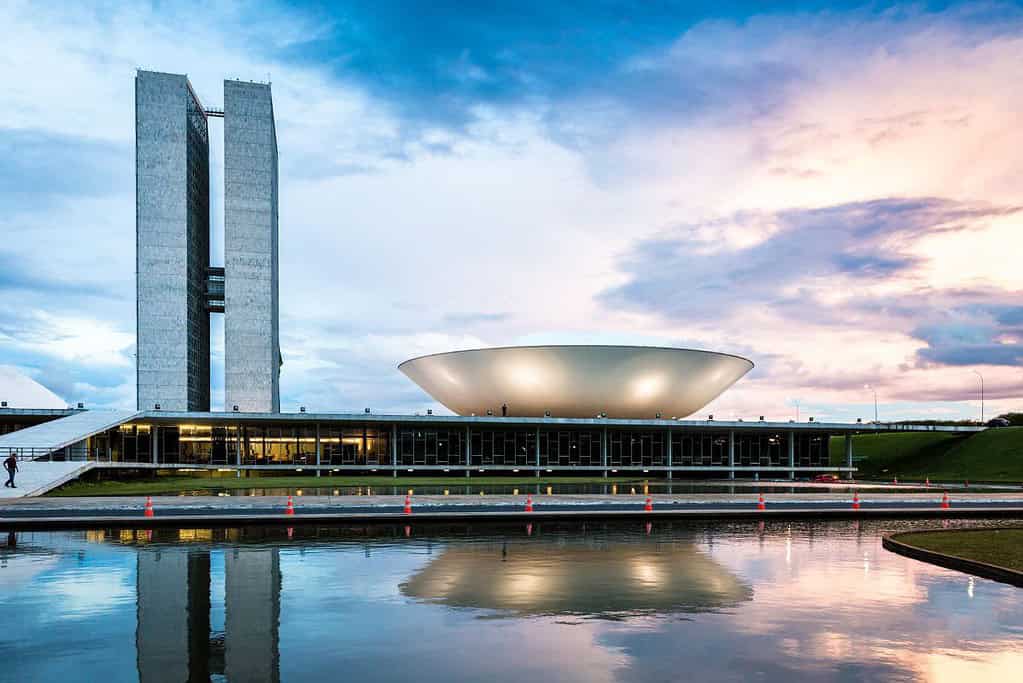
Brasilia, the capital of Brazil, has been designated as a UNESCO World Heritage Site for its modernist architecture and urban planning. The city was built from scratch in the 1950s and 60s, and modernist architects and planners such as Le Corbusier and Lucio Costa influenced its layout and design. The key sites recognized by UNESCO include the city’s central axis, the residential superblocks, and several important buildings, such as the National Congress, the Presidential Palace, and the Cathedral of Brasilia.
Historic Centre of Salvador de Bahia
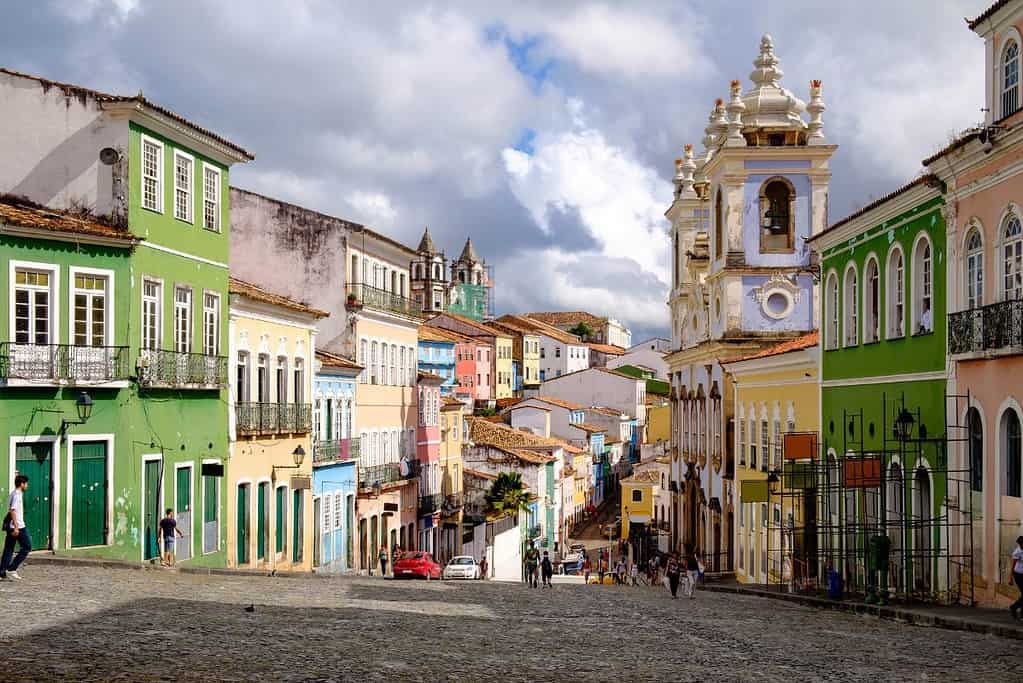
The Historic Centre of Salvador de Bahia is a UNESCO World Heritage Site in the Brazilian city of Salvador. It comprises the colonial-era historic center of the city, which includes many significant architectural and cultural landmarks, such as the Pelourinho district, the Cathedral of Salvador, and the São Francisco Church and Convent. The site is notable for its fusion of African, European, and indigenous cultural influences, which have shaped the unique character of Salvador’s historic center.
Historic Centre of São Luís

The Historic Centre of São Luís is a UNESCO World Heritage Site in Brazil. It is a well-preserved example of Portuguese colonial architecture and features over 4,000 buildings that date back to the 17th and 18th centuries. The historic center is notable for its harmonious blend of European, African, and indigenous influences, reflected in its unique architectural style. Some of the most notable landmarks in the area include the São Luís Cathedral, the São João Batista Church, and the Art and Culture Center of Maranhão.
Historic Centre of the Town of Diamantina
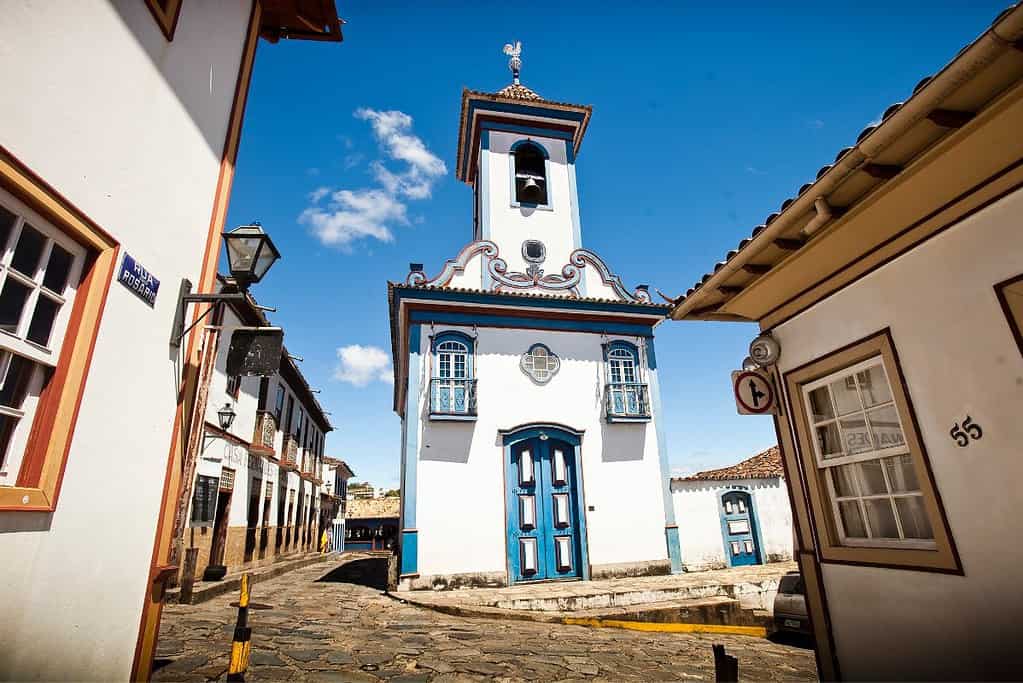
The Historic Centre of the Town of Diamantina is a UNESCO World Heritage Site in Minas Gerais, Brazil. The town was founded in the 18th century during the Brazilian Gold Rush and was an essential diamond mining and trade center. The site’s historic center is characterized by its well-preserved colonial architecture and urban design, which reflects the cultural and economic significance of the town during the 18th and 19th centuries. Highlights of the site include the baroque-style Church of Our Lady of the Rosary and the ornate Diamond Museum.
Historic Centre of the Town of Goiás
The Historic Centre of the Town of Goiás is a UNESCO World Heritage Site in Goiás, Brazil. It is a well-preserved example of a colonial town founded in the 18th century during the gold rush in central Brazil. The town features numerous examples of Baroque and Rococo architecture, including the Matriz Church of Our Lady of the Rosary, the Carmelite Church and Convent, and the House of the Bandeirantes. The town’s historic center also boasts picturesque streetscapes and public spaces that give visitors an authentic glimpse into Brazil’s colonial past.
Historic Centre of the Town of Olinda
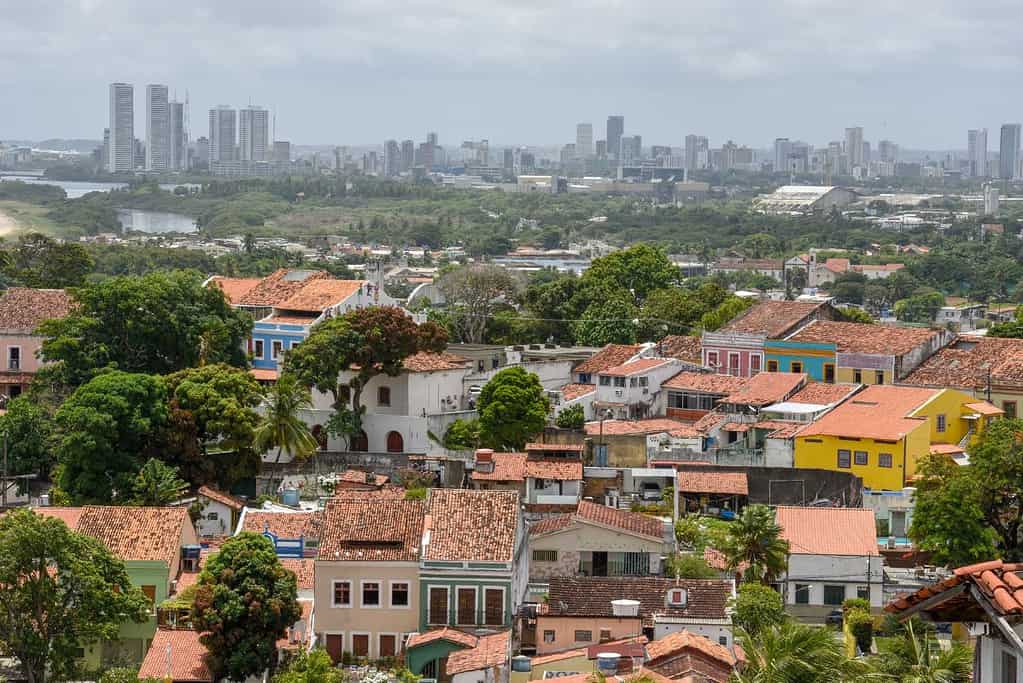
The Historic Centre of the Town of Olinda is a UNESCO World Heritage Site in northeastern Brazil. It is known for its well-preserved colonial architecture, vibrant street life, and stunning views of the Atlantic Ocean. The town was founded in the 16th century and served as a significant center of trade and culture during the colonial period. Today, it is a popular tourist destination and a symbol of Brazil’s rich cultural heritage.
Historic Town of Ouro Preto
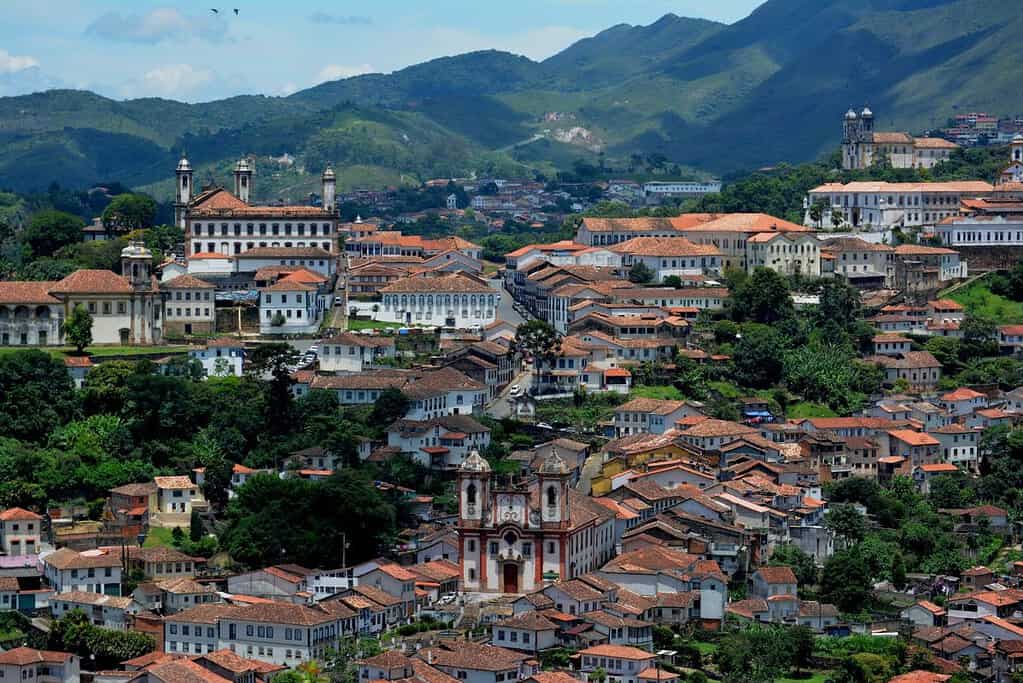
The historic Town of Ouro Preto is a UNESCO World Heritage Site in Minas Gerais, Brazil. It was founded in the late 17th century and became a center for gold mining and producing precious stones. The town features well-preserved examples of Baroque architecture, including churches, bridges, and fountains. Its historic center is a living museum of colonial Brazil and offers visitors a glimpse into the country’s rich cultural and architectural heritage.
Jesuit Missions of the Guaranis: San Ignacio Mini, Santa Ana, Nuestra Señora de Loreto and Santa Maria Mayor (Argentina), Ruins of Sao Miguel das Missoes (Brazil)
The Jesuit Missions of the Guaranis are a group of UNESCO World Heritage Sites in Argentina and Brazil. These sites include the ruins of San Ignacio Mini, Santa Ana, Nuestra Señora de Loreto, and Santa Maria Mayor in Argentina, as well as the Ruins of Sao Miguel das Missoes in Brazil. These sites are significant for their well-preserved remains of Jesuit missions established in the 17th and 18th centuries to convert the indigenous Guaraní people to Christianity. The missions also served as centers of education and agriculture, and the remaining structures are a testament to the unique blending of European and Guaraní cultures.
Pampulha Modern Ensemble
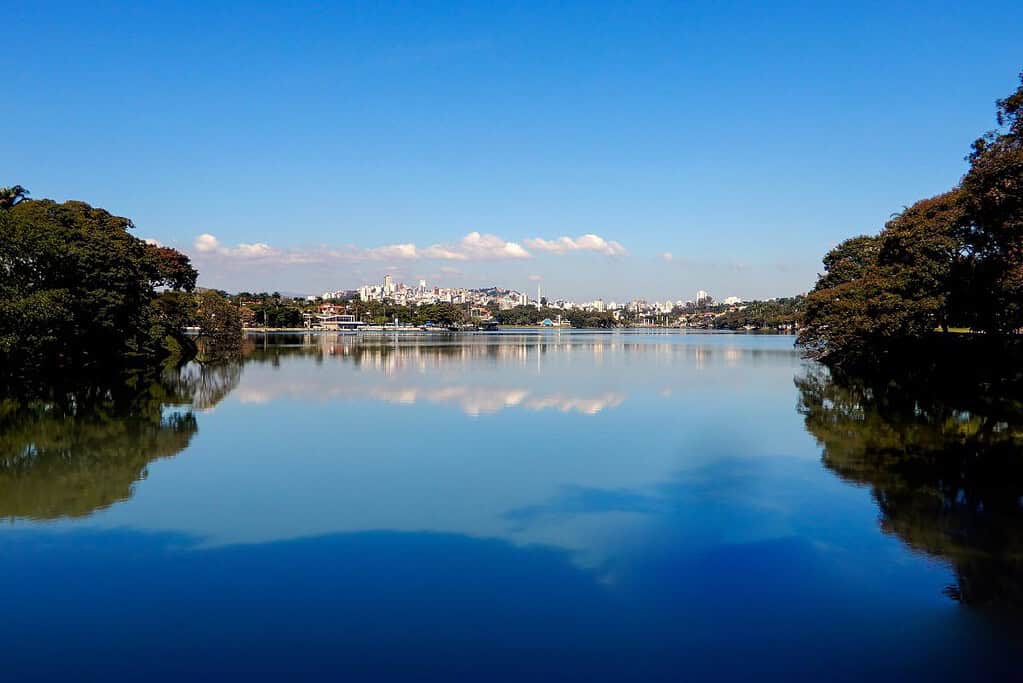
Pampulha Modern Ensemble is a UNESCO World Heritage Site in Belo Horizonte, Brazil. It is a collection of architectural and artistic works designed by renowned Brazilian architect Oscar Niemeyer and landscaper Roberto Burle Marx and painter Candido Portinari. The ensemble includes a church, a ballroom, a casino, and a yacht club, all of which feature modernist architecture and are set around an artificial lake. The Pampulha Modern Ensemble is considered a masterpiece of Brazilian modernism and a symbol of the country’s cultural identity.
Rio de Janeiro: Carioca Landscapes between the Mountain and the Sea
Rio de Janeiro: Carioca Landscapes between the Mountain and the Sea is a UNESCO World Heritage Site that encompasses the stunning natural landscapes of Rio de Janeiro, Brazil. The site uniquely blends urban and natural environments with iconic landmarks such as the Christ the Redeemer statue, Sugarloaf Mountain, and the Tijuca National Park. Rio de Janeiro’s cultural landscape also includes the city’s historic center and its vibrant neighborhoods, such as Copacabana and Ipanema, which are famous for their beaches, music, and dance.
Sanctuary of Bom Jesus do Congonhas
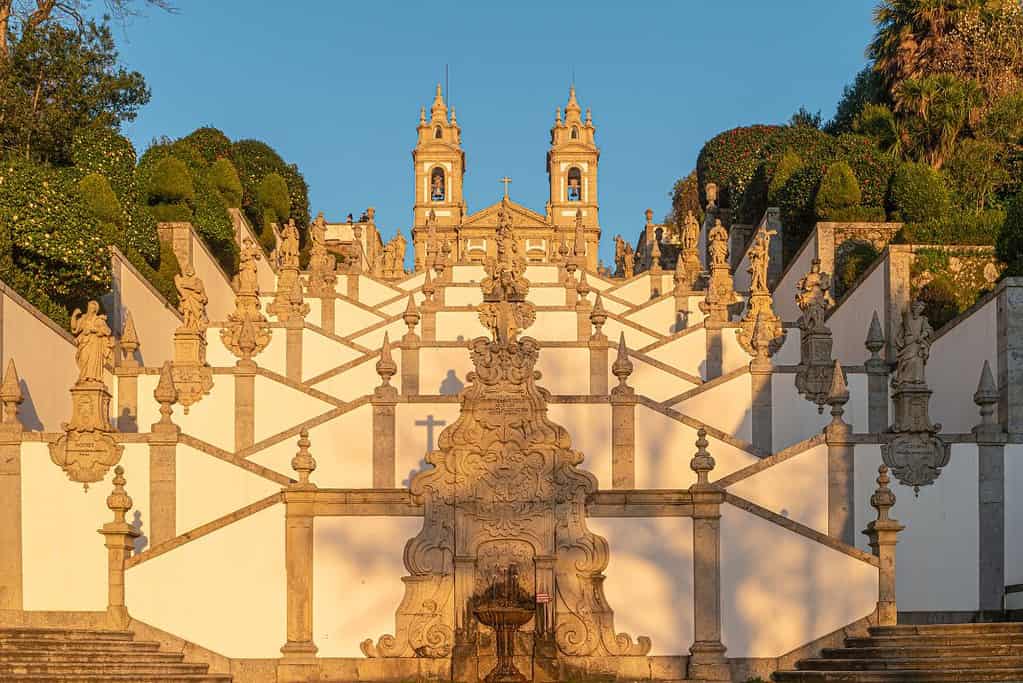
The Sanctuary of Bom Jesus do Congonhas is a UNESCO World Heritage Site in Brazil. It is a stunning example of Baroque art and architecture, featuring a church and a series of outdoor sculptures depicting the Passion of Christ. The sanctuary is renowned for its dramatic zigzag staircase, adorned with intricate sculptures, and leads to the church at the top. It is considered a masterpiece of Brazilian colonial art and a must-see attraction for visitors to the region.
São Francisco Square in the Town of São Cristóvão
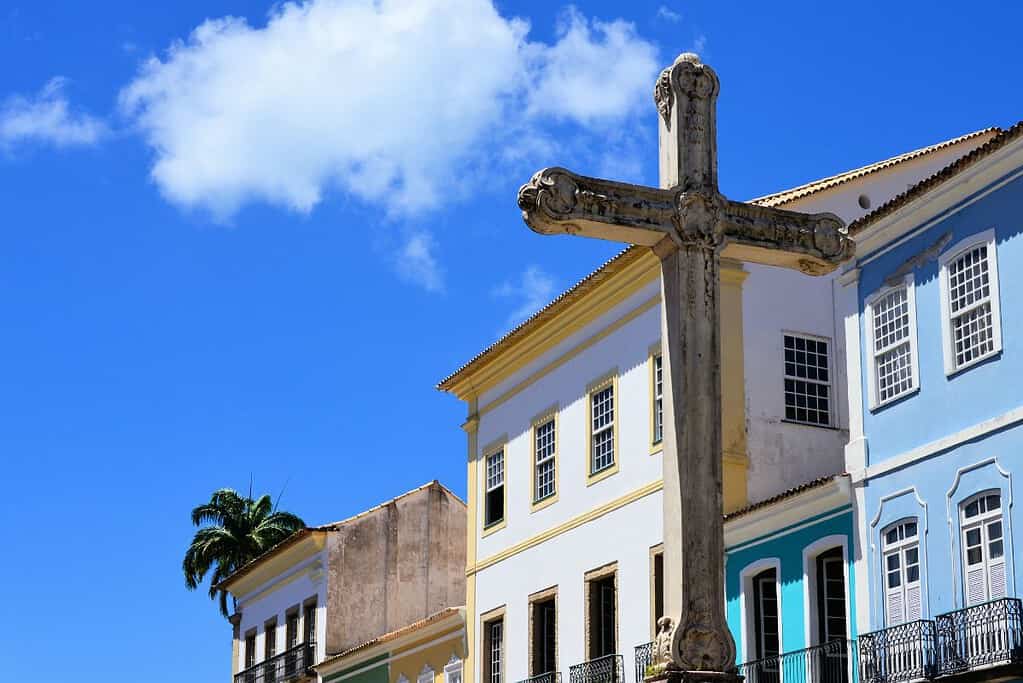
São Francisco Square is a UNESCO World Heritage Site located in the town of São Cristóvão, Brazil. It is a beautiful, historic square known for its well-preserved colonial architecture and religious buildings. The square’s centerpiece is the Church and Convent of São Francisco, built in the 18th century and features ornate Baroque decorations. The square has several other historic buildings, including the Town Hall and the Nossa Senhora da Vitória Church. It is a must-see destination for anyone interested in Brazil’s colonial history and architecture.
Serra da Capivara National Park
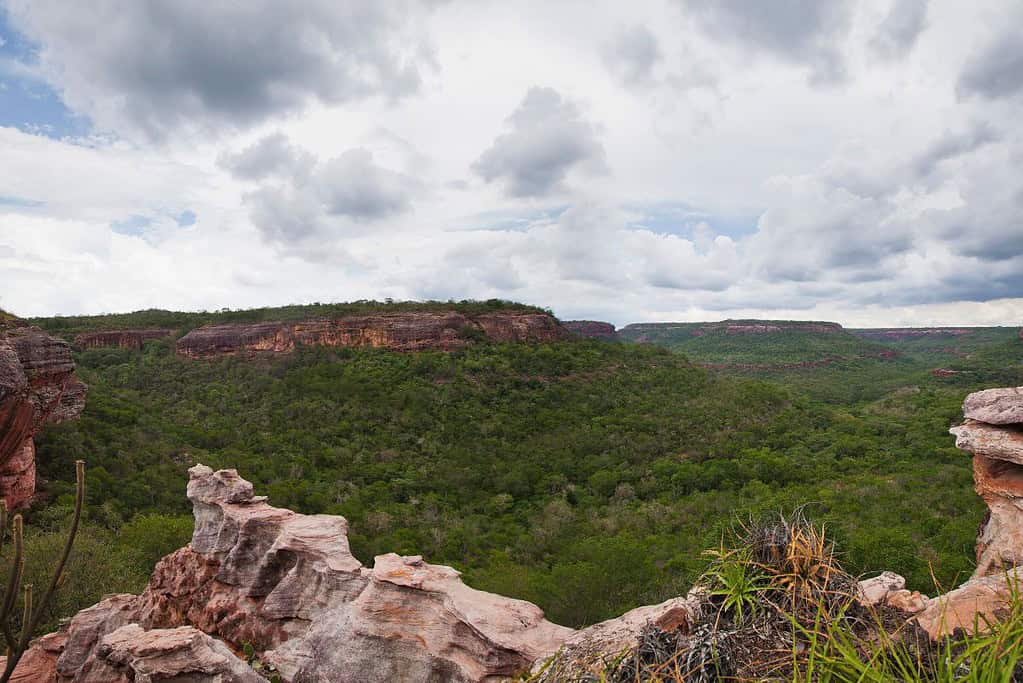
Serra da Capivara National Park is a UNESCO World Heritage Site in Brazil. It is renowned for its exceptional collection of prehistoric rock art, including some of the oldest and most significant cave paintings in the Americas. The park has a unique and biodiverse landscape, with deep canyons, towering cliffs, and meandering rivers.
Sítio Roberto Burle Marx

Sítio Roberto Burle Marx is a UNESCO World Heritage Site located in Brazil. It is a cultural landscape designed by the renowned artist and landscape architect Roberto Burle Marx, who transformed the site into a stunning garden filled with thousands of plant species, many native to Brazil. The site is not only a masterpiece of landscape design but also reflects the artist’s deep appreciation for the country’s cultural and natural heritage.
Valongo Wharf Archaeological Site
Valongo Wharf Archaeological Site is a UNESCO World Heritage Site in Rio de Janeiro, Brazil. It was once the largest port in the Americas for the arrival of enslaved Africans, with an estimated 1 million enslaved people passing through its doors. The site includes the remains of the wharf itself, as well as other structures and archaeological artifacts that provide insight into the history of the transatlantic slave trade.
Atlantic Forest South-East Reserves
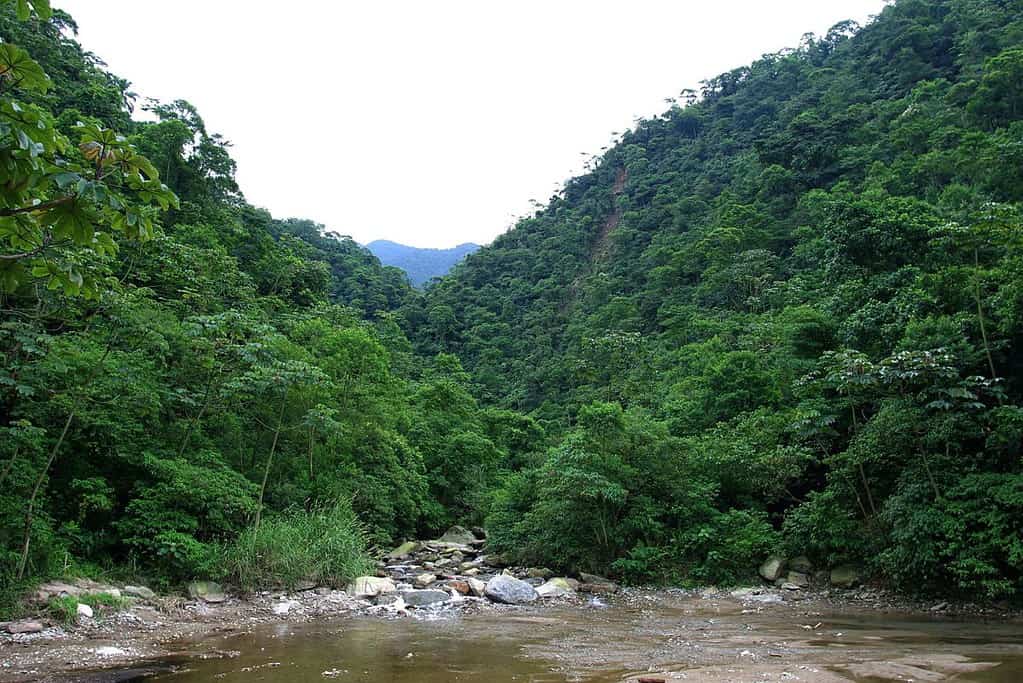
The Atlantic Forest South-East Reserves are a group of protected areas in Brazil designated as UNESCO World Heritage Sites. These reserves are home to some of the world’s wealthiest and most diverse ecosystems, with a high level of endemism, meaning that many of the species found here are found nowhere else on Earth. The reserves contain a range of habitats, including rainforests, mangroves, and wetlands, and are home to numerous endangered species such as the golden lion tamarin and the woolly spider monkey. The Atlantic Forest South-East Reserves are an important conservation area and a testament to our planet’s incredible biodiversity.
Brazilian Atlantic Islands: Fernando de Noronha and Atol das Rocas Reserves
Fernando de Noronha and Atol das Rocas Reserves are UNESCO World Heritage Sites in the Brazilian Atlantic Islands. These reserves are known for their exceptional biodiversity and the preservation of unique ecosystems, including coral reefs, rocky shores, and mangroves. The Fernando de Noronha reserve is home to several endemic species, such as the Noronha skink and the Noronha Elaenia. In contrast, the Atol das Roca’s reserve is a crucial breeding site for several species of seabirds and sea turtles. Together, these reserves play a critical role in protecting the ecological integrity of the Brazilian Atlantic Islands.
Central Amazon Conservation Complex
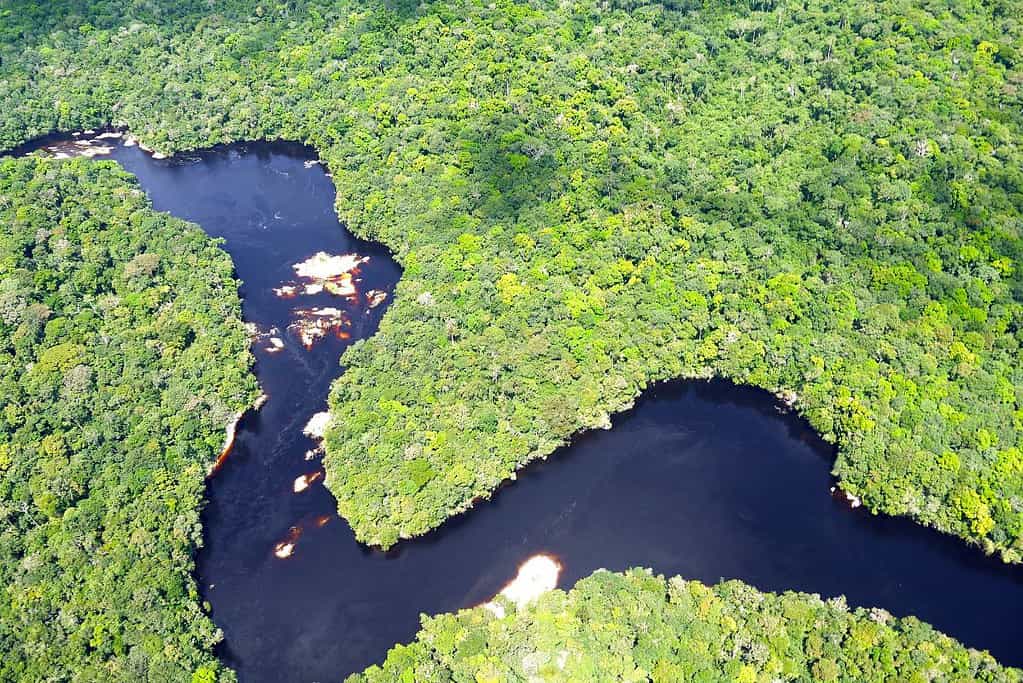
The Central Amazon Conservation Complex is a UNESCO World Heritage Site in Brazil. It is one of the largest protected areas in the Amazon basin, covering over 6 million hectares of pristine tropical rainforest. The site includes three interconnected conservation units: the Jaú National Park, the Anavilhanas Ecological Station, and the Rio Negro State Park. It is home to an incredible diversity of flora and fauna, including many rare and endangered species. The site is also of great cultural significance, as indigenous peoples have inhabited it for thousands of years.
Cerrado Protected Areas: Chapada dos Veadeiros and Emas National Parks
Cerrado Protected Areas: Chapada dos Veadeiros and Emas National Parks are two UNESCO World Heritage Sites located in Brazil. These protected areas are home to diverse flora and fauna, including many endangered species. The parks are known for their unique landscapes, which feature towering waterfalls, deep canyons, and extensive plateaus. They are also crucial for preserving the Cerrado biome’s biodiversity, one of the world’s most threatened savanna ecosystems.
Discovery Coast Atlantic Forest Reserves
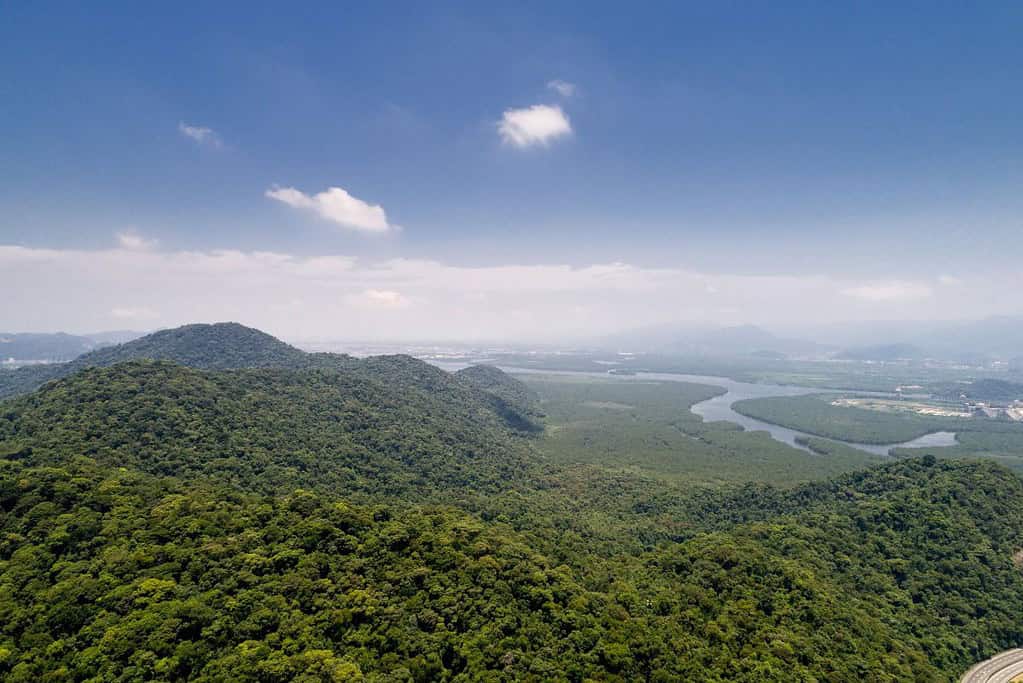
The Discovery Coast Atlantic Forest Reserves are protected areas along the Brazilian coastline, recognized as a UNESCO World Heritage Site for their exceptional biodiversity and unique ecosystem. These reserves cover over 112,000 hectares of land and are home to various endemic plant and animal species, some of which are endangered. The area is also culturally significant as it was the first place Portuguese navigators arrived in Brazil in the 16th century. The reserves allow visitors to explore the pristine Atlantic Forest, hike along scenic trails, and discover the region’s rich cultural heritage.
Iguaçu National Park
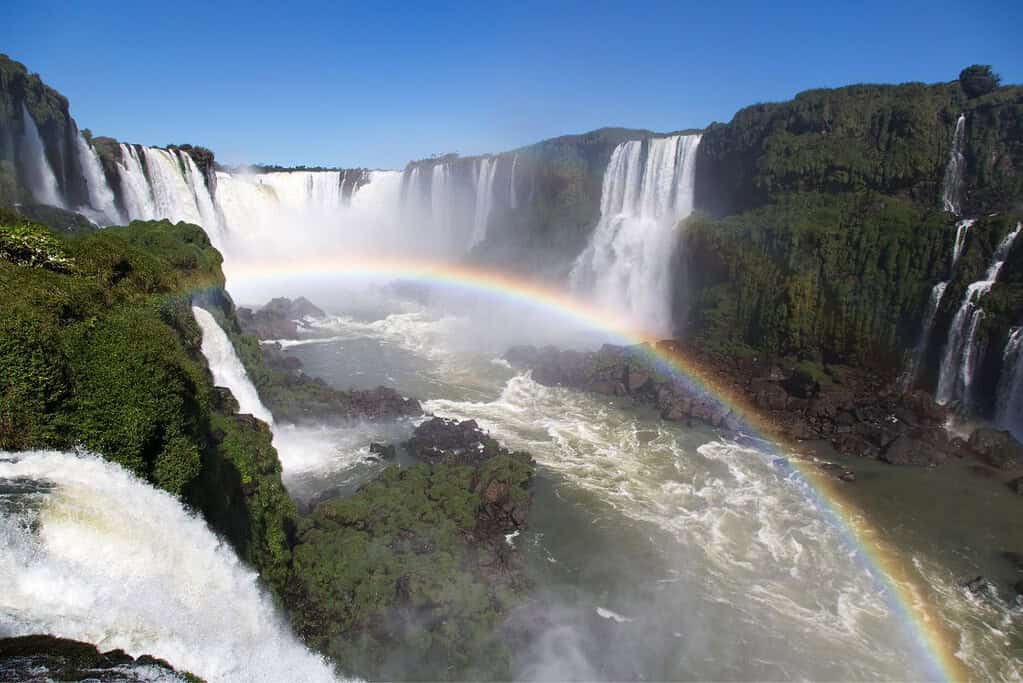
Iguaçu National Park is a UNESCO World Heritage Site located in Brazil, on the border with Argentina. It is home to the spectacular Iguaçu Falls, one of the world’s largest waterfalls, and a breathtaking sight to behold. The park is also home to diverse flora and fauna, including endangered species such as the jaguar and the giant otter. It is a must-see destination for nature lovers and adventure seekers alike.
Pantanal Conservation Area
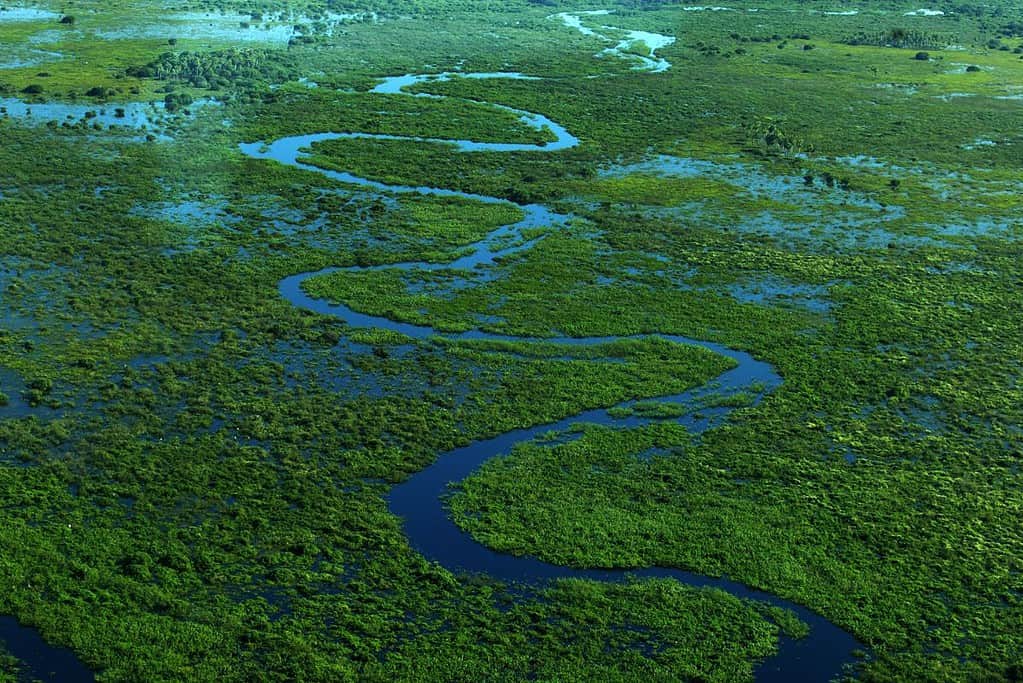
The Pantanal Conservation Area is a UNESCO World Heritage Site located in Brazil. It is one of the largest freshwater wetland systems in the world and is home to a wide variety of flora and fauna, including many endangered species. The conservation area is vital to the region’s ecological balance and an important livelihood source for local communities.
Paraty and Ilha Grande – Culture and Biodiversity
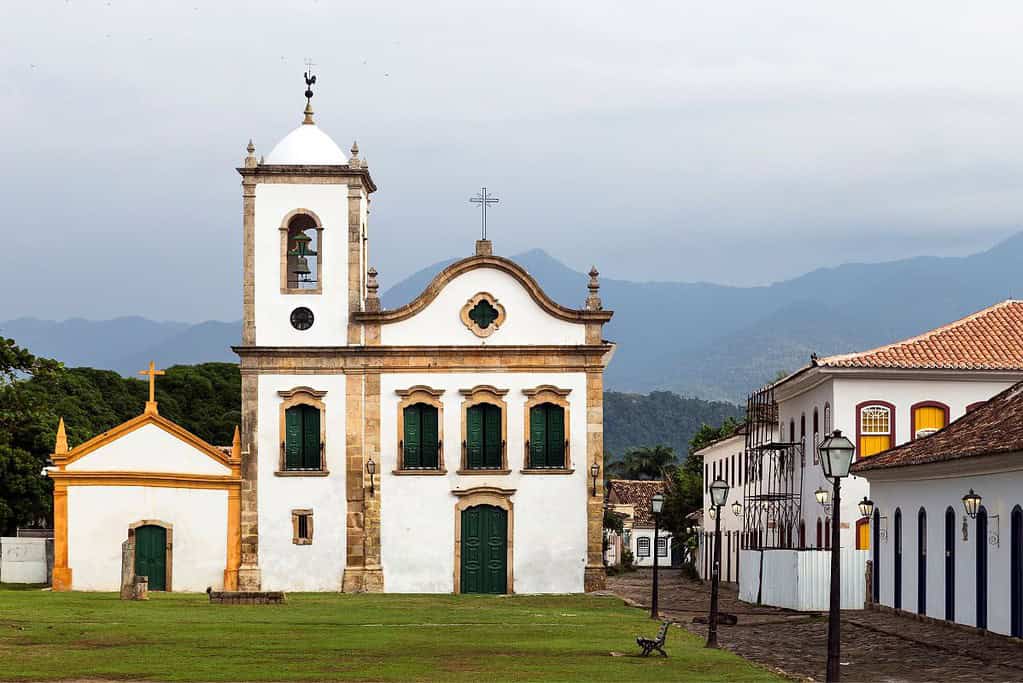
Paraty and Ilha Grande are two UNESCO World Heritage Sites in Brazil known for their unique blend of culture and biodiversity. Paraty, a historic town on the Costa Verde, was an important port for gold shipments during the colonial era and has managed to preserve much of its colonial architecture. Ilha Grande, on the other hand, is an island off the coast of Rio de Janeiro that boasts stunning natural beauty, including rainforests, beaches, and crystal-clear waters. These sites are essential for their cultural and historical significance and their role in preserving Brazil’s rich biodiversity.
Brazil UNESCO tentative list
- Eglise et Monastère de Sao Bento, Rio de Janeiro
- Palais de la Culture, ancien siège du Ministère de l’Education et de la Santé, Rio de Janeiro
- Parc national du Pico da Neblina (Amazonas)
- Parc national de la Serra da Bocaina (São Paulo – Rio de Janeiro)
- Réserve biologique d’Atol das Rocas (Rio Grande do Norte)
- Station écologique de Taim (Rio Grande do Sul)
- Station écologique du Raso da Catarina (Bahia)
- Canyon du Rio Peruaçu, Minas Gerais
- Anavilhanas Ecological Station
- Serra do Divisor National Park
- Serra da Canastra National Park
- Cavernas do Peruaçu Federal Environmental Protection Area (APA) / Veredas Do Peruaçu State Park
- Serra da Capivara National Park and Permanent Preservation Areas
- Cultural Landscape of Paranapiacaba: Village and railway systems in the Serra do Mar Mountain Range, São Paulo
- Ver-o-Peso
- Amazonia Theaters
- Brazilian Fortresses Ensemble
- Cedro Dam in the Quixadá Monoliths
- Geoglyphs of Acre
- Itacoatiaras of Ingá River
- Parque Nacional dos Lençóis Maranhenses – Lençóis Maranhenses National Park
Tours in Brazil
Our choices of tours in Brazil are divided into thematic features such as Rio de Janeiro, Salvador, and São Paulo Experience.
